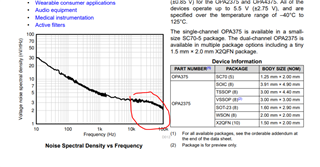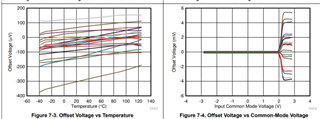Hi,
I was looking at the OPA375 and saw that this device has a max offset voltage of +-500uV under he test conditions. I then took a look at the figures lower in the datasheet and had a hard time understanding figure 7-4 (offset voltage vs common-mode voltage. I watched some of the precision labs videos but didn't quite find the answer to help explain why in figure 7-4 the offset voltage is off by an order of magnitude (5000uV@ CM of 2.5V) from the spec in the electrical characteristic table earlier on. Can you help me understand why this is different?
Thanks





